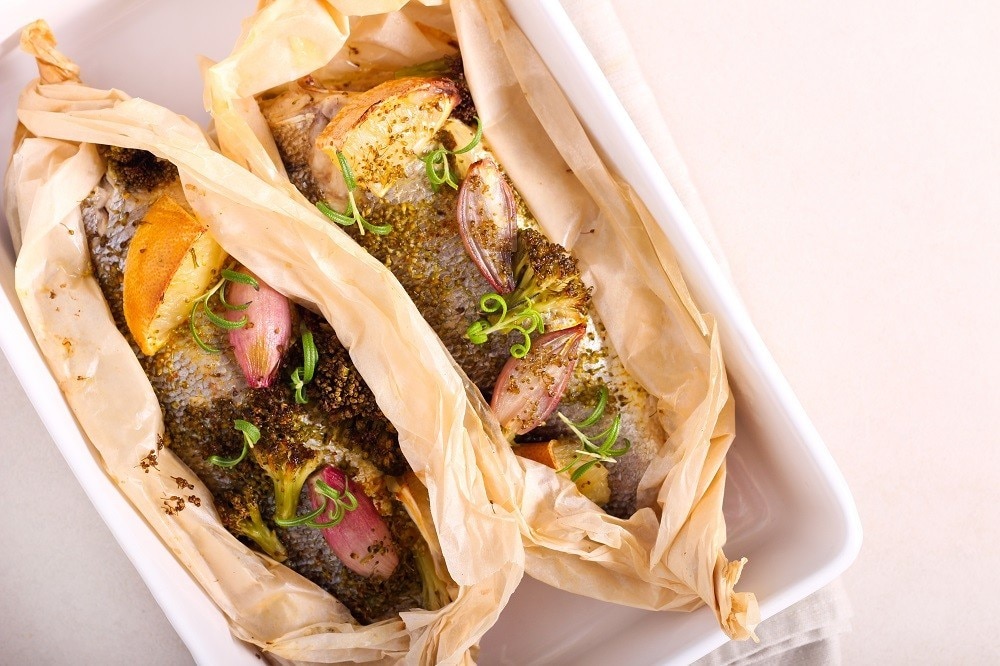5 Western Methods of Cooking Fish That Can Elevate Classic Filipino Dishes

The numerous methods of cooking fish satisfy different discerning appetites. Chinese chefs often steam different types of fish to succulent perfection. In French cuisine, chefs can transform just-caught bonefish into a hearty stew called bouillabaisse. Indian kitchens infuse fish slices with potent spices to make rich, comforting curry. England pairs battered, deep-fried fish fillets with salty chips. And in many South American countries, fish is turned into taco filling, topped with all kinds of salsas.
Understanding the permutations a person can cook and enjoy – fish offers fresh ways to delight your customers and keep them coming back for more. While most restaurants offer fish as lighter fare, you can intrigue seafood lovers with heartier and more unique dishes.
Philippine cuisine demonstrates many ways to cook fish. From the northernmost island in Luzon to the Southern tip of Mindanao, every locale boasts its methods of cooking fish, be it sinigang, paksiw, pesa, or sarsiado. They're undeniably delicious, but their ubiquity may cause diners to overlook them on restaurant menus. One possible solution? Present Filipino dishes in new ways by employing Western methods of cooking fish.
Call it “fusion,” if you will. Experimenting with foreign techniques can bring out the best of two culinary cultures while playing up overlooked local recipes. If you’re curious enough to try it, here are some tips on how to apply Western methods of cooking fish to well-loved Filipino dishes.

1. En papillote
Cooking en papillote keeps the fish succulent until it reaches the dinner table. An Italian method of baking, it would work well with steamed lapu-lapu, a Filipino fish prized both for its freshness and celebratory status. Start by deboning your fish—this alone already takes your dish to a more sophisticated level! Place it inside a paper parcel, along with a handful of vegetables, like green beans, green onions, and chilies. Spoon over a simple sauce of Knorr Oyster Sauce, sesame oil, and rice wine vinegar. Bake the fish fillet in the oven until done. Open the parcels and drizzle with coconut sauce, if desired.

2. Sous vide
A dependable French method of cooking fish, sous vide helps fish retain its flavor and moisture. Done at a low temperature, it allows the fish to cook evenly and its flesh to stay tender. This method can apply to Filipino fish dishes served in rich sauces. With this way of cooking, the fish absorbs every ounce of flavor and remains the dish’s highlight. Try it next time you’re preparing fish escabeche or salpicao.

3. Smoking in the oven
Smoking has long been used in Western cooking to flavor, cook, and preserve different types of proteins. The Philippines has its native tricks of smoking meats, as you can see with tinapa—an affordable breakfast favorite in most households. Unfortunately, the traditional and time-consuming method of making tinapa isn’t often practiced at home or in restaurants. As a quicker alternative, you can try making tinapa using the Western method of smoking fish in the oven. Play around with liquid smoke or different varieties of wood chips to create new flavors.

4. Poaching
Considered one of the healthier ways to prepare food, poaching simply means cooking something in water. It can help fish retain moisture, without oil or other fats. This method of cooking can be applied to flavorful Filipino soups, such as fish sinigang or tinola. With local cooking methods, fish tends to overcook and become rubbery or chewy. The key is to cook the fish gently over a low flame—the liquid should be barely simmering, not boiling. It’s as simple as preparing Knorr Sinigang sa Sampalok Mix in some water. Simmer the fish for about 10 minutes and remove immediately to stop the cooking process.
5. A la plancha
Grilling is not a foreign concept, but cooking a la plancha is a Spanish grilling method that would work well in Filipino cuisine. It requires grilling food on a piping hot, round metal plate instead of a typical griddle. This cooking method sears the meat, leaves its juices intact, and creates a nice crispy browned surface. Cooking a la plancha would work best with Filipino grilled fish dishes, like inihaw na panga tuna or stuffed bangus.
With the diverse varieties of fish found in Philippine waters, Filipino seafood dishes deserve to be treated and served with care. Of course, Western methods of cooking fish aren’t necessarily better. But there’s no harm in experimenting—borrowing techniques from other cuisines can add exciting twists and new textures to familiar meals.
Ready to innovate? Share this article with a colleague who might need some inspiration.
What you'll get:
- Access to free Chef trainings
- The best recipes and tips from Chefs around the world
- The latest culinary trends
